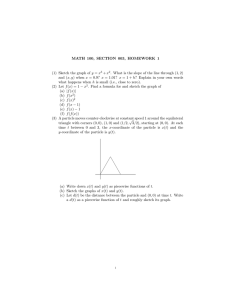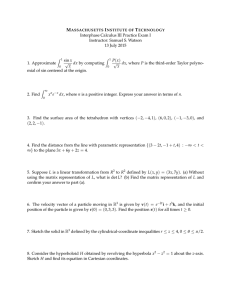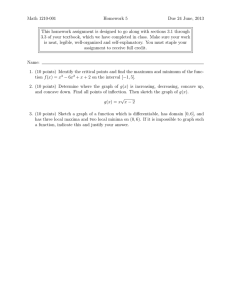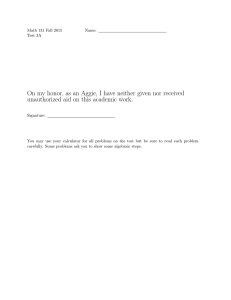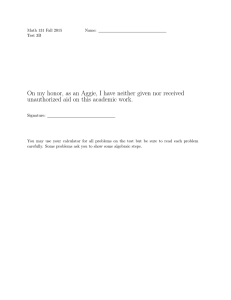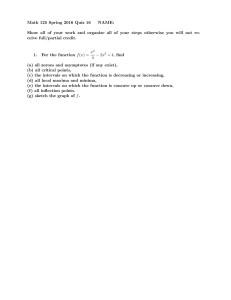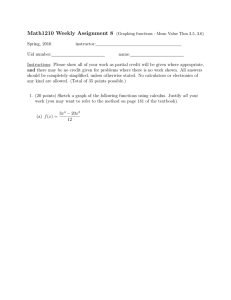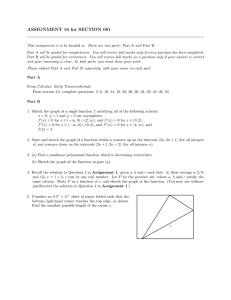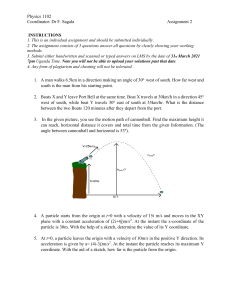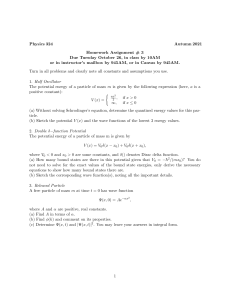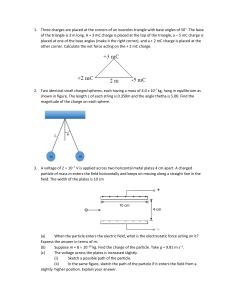Name: Math 2250 Final Exam December 14, 2011
advertisement
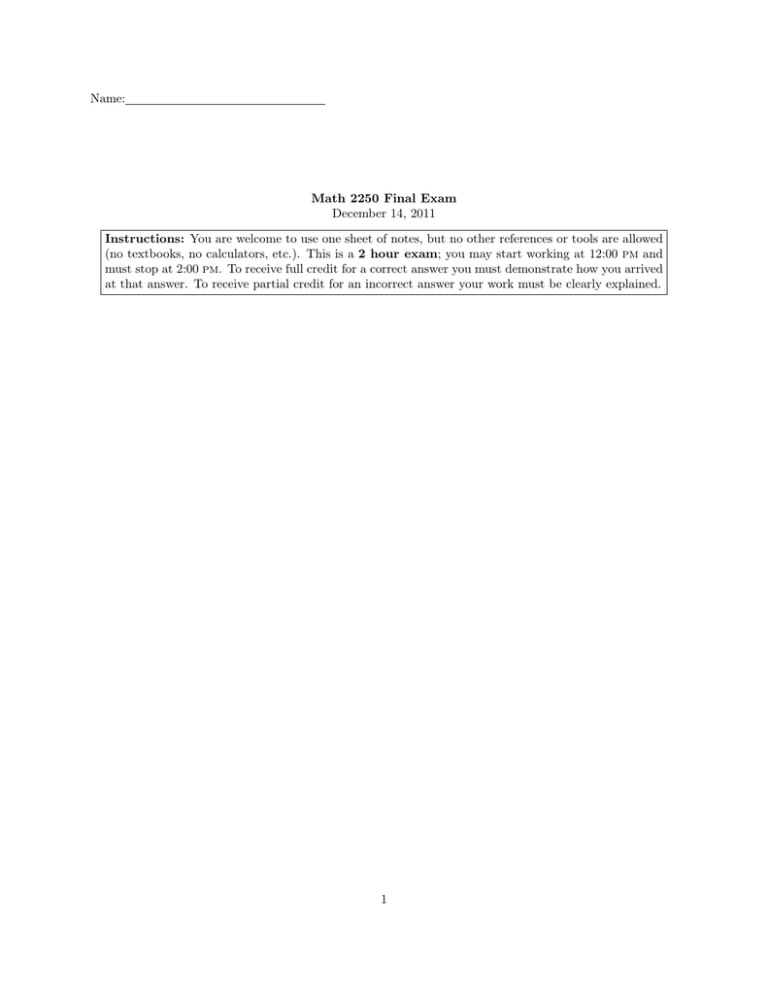
Name: Math 2250 Final Exam December 14, 2011 Instructions: You are welcome to use one sheet of notes, but no other references or tools are allowed (no textbooks, no calculators, etc.). This is a 2 hour exam; you may start working at 12:00 pm and must stop at 2:00 pm. To receive full credit for a correct answer you must demonstrate how you arrived at that answer. To receive partial credit for an incorrect answer your work must be clearly explained. 1 1. Let f (x) = 2x ln x. (a) What is the domain of the function f ? (b) What is f 00 (2)? 2 2. Evaluate the limit (ln t)2 . t→1 4t3 − 12t + 8 lim 3. Consider the function f (x) = ( cos x 2 For what values of x is f (x) discontinuous? 3 πx 3 if |x| ≤ 1 if |x| > 1. 4. The curve shown below is described by the equation xesin y = 1. What is the slope of the tangent line to the curve at the point (1, 0)? 5 2.5 -2.4 -1.6 -0.8 0 -2.5 -5 4 0.8 1.6 2.4 5. A bacterial culture is being grown in a Petri dish, and the area is increasing at a rate of 1 cm2 per day. At what rate is the circumference of the culture increasing when the radius is 2 cm? 5 6. Two factories are located at the coordinates (10, 0) and (−10, 0) and the local power station is located at (0, 5), as shown in the figure. Find the distance y that minimizes the total length of power√lines (the thick√lines in the figure) from the power station to the factories. (Note: the approximations 3 ≈ 1.73 and 125 ≈ 11.2 may come in handy.) 5 y -10 6 0 10 7. Use an appropriate linearization to approximate 8. Evaluate Z √ 4 √ 3 √ 0 7 0.98. x x2 +1 dx. 9. Suppose the velocity of a particle is modeled by the function v(t) = 2t2 − 6t + 4, where t is measured in seconds and velocity in meters per second. (a) If the position of the particle at time t = 0 is 4 meters to the right of the origin, what is the function s(t) which describes the position of the particle after t seconds? (b) After how many seconds does the particle change direction? 8 10. Sketch the graph of the function f (x) = exx . You should be sure to label any absolute or relative maxima or minima and any inflection points, and your sketch should be good enough that it’s clear where the graph is concave up and where it is concave down. Any asymptotes should also be clear in your sketch. (Hint: it’s a good idea to factor and simplify as much as possible at each stage.) 9
